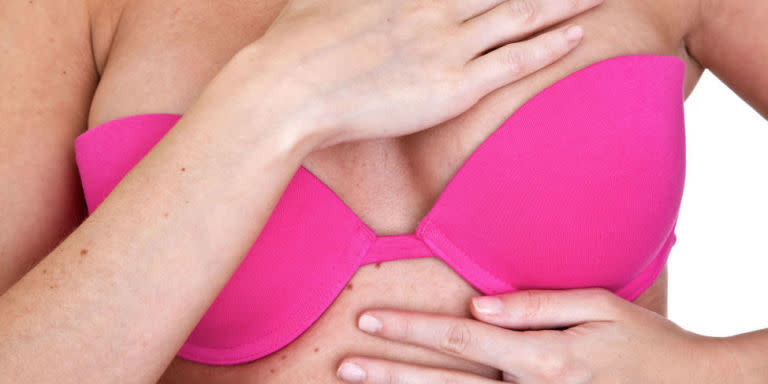This Woman Thought Her Freckles Were Just From the Sun, But They Turned Out to Be Cancer

It's easy to dismiss freckles or small marks on your skin as sun spots that aren't worth worrying about - especially in the summer time. But one Georgia mom learned the hard way that a group of spots she initially dismissed were much more than signs of too much sun exposure.
Rebecca Hockaday noticed her first mark at the end of the summer, and didn't think much of it. When more of these spots popped up over the following months, though, she worried it was something else and decided to go to her dermatologist.
"Honestly, I thought they were sun spots. I thought they were going to say, 'just your skin aging,'" Hockaday told TODAY.
After a biopsy, doctors told her those "freckles" were actually skin cancer. Hockaday was only 35 when she was diagnosed with inflammatory breast cancer (IBC), which is a rare but aggressive form of the disease. By the time she went to her doctor, it had already spread to her lymph nodes.
"You just do not think that something [that looks] so innocent can turn out this way. I had no pain, I had no symptoms," she said.
Although IBC is rare, making up only two percent of breast cancer cases, this isn't the first time this canc has made headlines this year. Just last month, the story of a Texas mom who mistook her stage 4 cancer for a sunburn went viral.
In both cases, the women involved thought their cancer was a negligible skin issue, an easy mistake to make with IBC. While most instances of breast cancer show up with a lump and can be diagnosed with a mammogram, both of these women had mammograms that came back clean.
"Half the time there's no lump or anything like that," Jean Wright of the Johns Hopkins Breast Cancer Program told TODAY. "It's just the kind of skin changes, and so it can relatively easily be mistaken for an infection, mastitis, or something like that."
Redness and swelling are trademark signs of IBC, which explain both the sunburn and freckle misdiagnoses. The most characteristic sign of IBC, though, is that it happens very quickly, Wright said. The changes are usually noticeable within a month.
Hockaday went through chemotherapy and eventually chose to remove her breasts. It was an intense process, with twice daily radiation treatments, broken bones, and infections afterward, but she has been in remission since 2013.
Even though the threat of IBC is a scary one, there are things women can do to be vigilant about their health. Dermatologist Cameron Rokhsar told TODAY that when it comes to rashes or marks, seeing a dermatologist is sometimes better than a primary care physician because they're trained to detect problems with the skin more quickly.
"If women see a rash on their breast that doesn't go away within one to two weeks, especially after the use of a cortisone cream, then they should see their dermatologist," Rokhsar, an associate clinical professor of dermatology at Mount Sinai Hospital, said.
Rashes are not trivial, and Hockaday hopes her story can help other women pay more attention to their individual health.
"If I can keep anybody else from going through what I went through, it would mean the world to me," she said. "I hope that myself or anybody else who has gone through this can educate and raise awareness because moms tend to put ourselves last and we really need to put ourselves first."
Again, the most important part is paying attention to your body and knowing the signs of different kinds of breast cancer. Don't look just for bumps, but for any irregularities. Being overly cautious is always better than knowing you could have caught something earlier.
Follow Redbook on Facebook.
You Might Also Like

